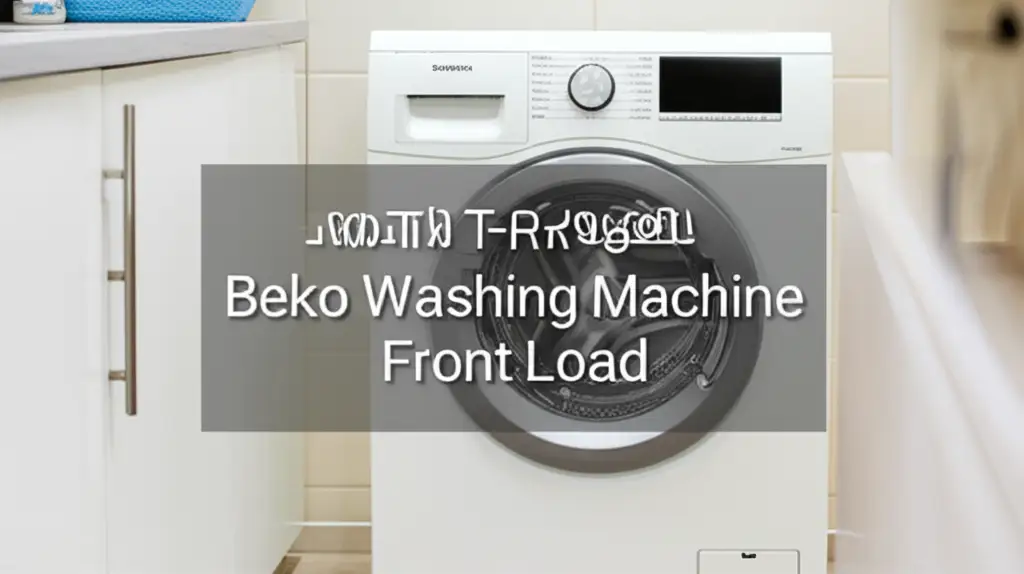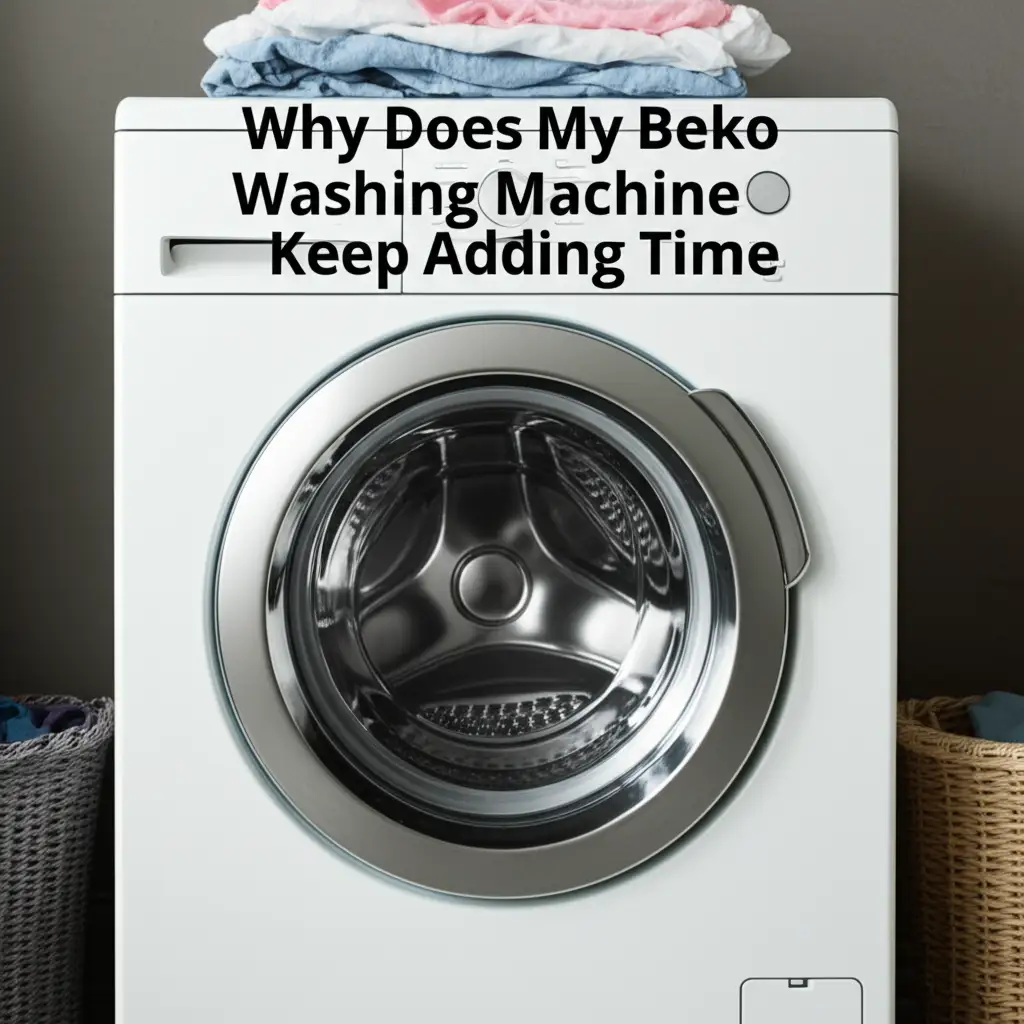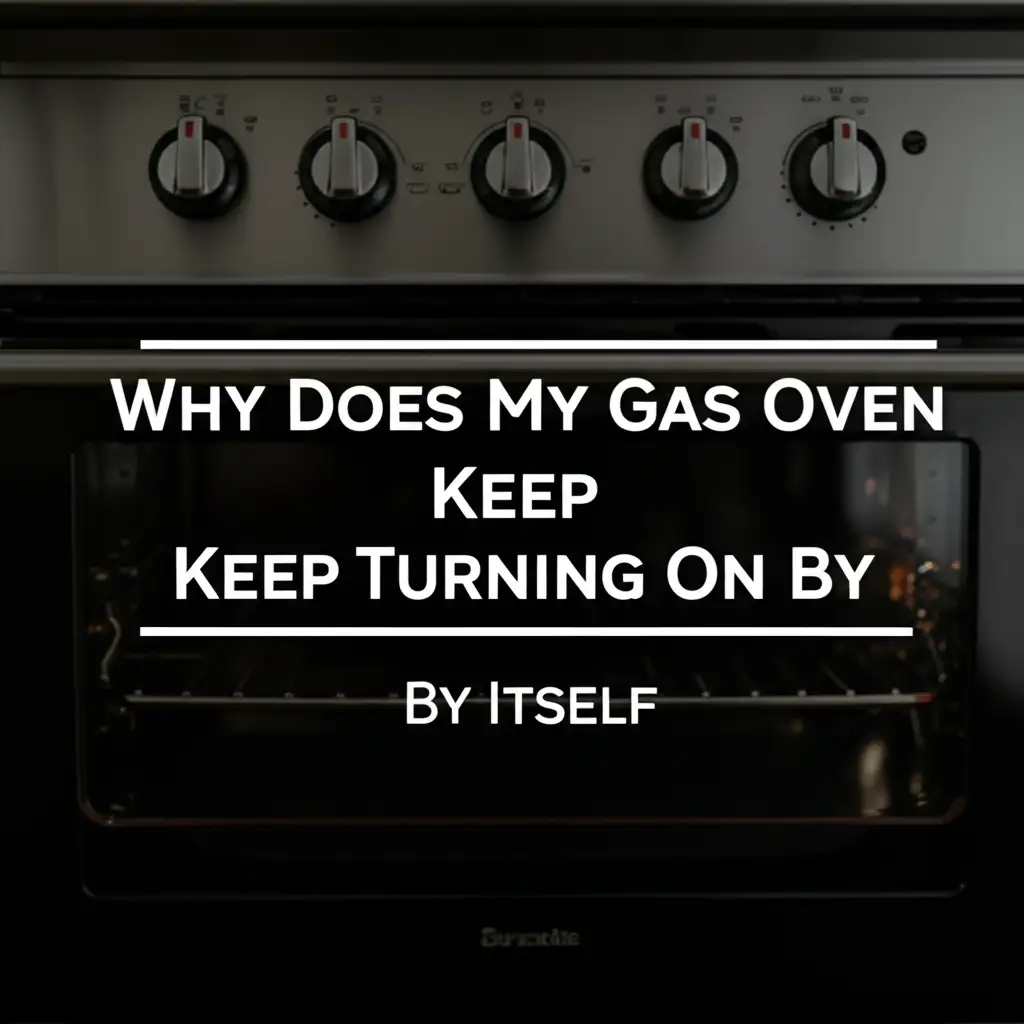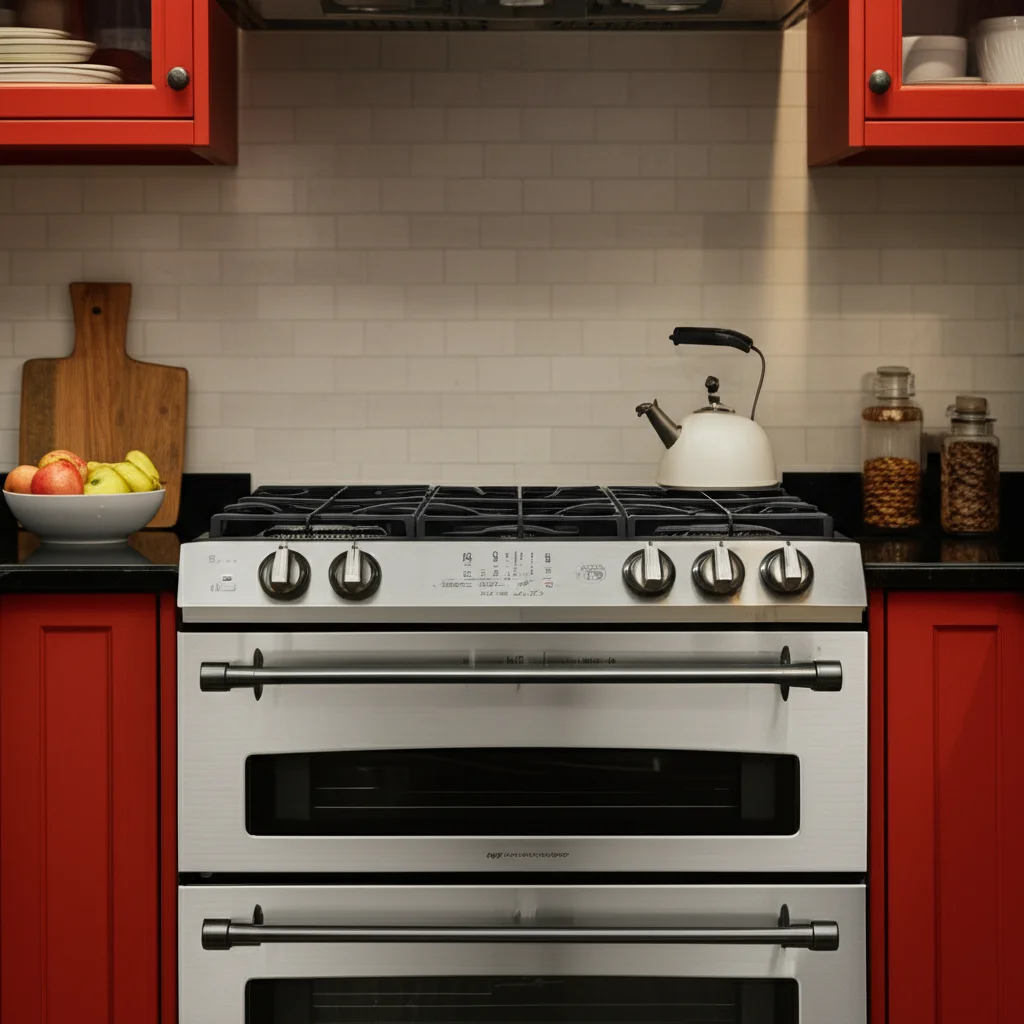· Todd Martin · Home Appliances · 16 min read
Why Does My Whirlpool Oven Take Forever To Heat Up
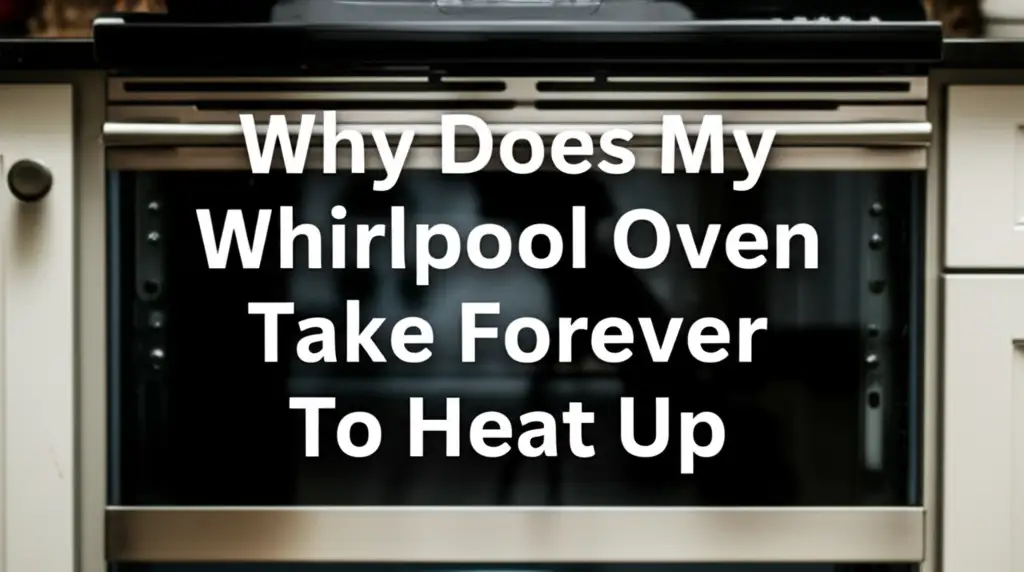
Why Does Your Whirlpool Oven Heat Slowly?
It is frustrating when your Whirlpool oven takes an extended time to heat up. You set the temperature, and then you wait. Cooking plans get delayed. This common problem has various causes, from simple user errors to part failures. Understanding these issues helps you fix the problem faster. I will explain common reasons your Whirlpool oven heats slowly. I will also provide steps for troubleshooting.
Takeaway: Solve Your Oven’s Slow Heating
- Check Preheat Expectations: Understand normal preheat times for your oven model.
- Inspect Heating Elements: Look for visible damage on bake and broil elements.
- Test Temperature Sensor: Ensure the sensor provides accurate readings.
- Examine Door Seal: A faulty door gasket lets heat escape.
- Consider Control Board: Malfunctions in the control board affect heating cycles.
- Clean Oven Regularly: Dirt and grease can affect efficiency.
- Know When to Call: Some repairs require professional assistance.
Understanding Your Whirlpool Oven’s Heating Time
Your Whirlpool oven might take longer to heat up due to a faulty heating element, a broken temperature sensor, or a damaged door seal. Other factors include a malfunctioning control board or issues with power supply. Proper identification of the cause helps ensure a quick repair.
Understanding Normal Oven Preheat Times
Many people wonder if their oven is truly slow or if they just expect it to heat faster. Normal preheat times for ovens vary. Factors like oven size, initial temperature, and selected temperature affect this time. A typical oven takes 10 to 15 minutes to reach 350°F (175°C). Larger ovens or those starting from a very cold state might take longer.
Modern ovens often have a preheat indicator. This light or sound tells you when the oven reaches the set temperature. Do not rely on this indicator alone if you suspect a problem. You can use an oven thermometer to check for accuracy. Place the thermometer inside before you start the preheat cycle. This gives you a clear reading of the actual temperature.
Your oven also needs to recover heat during cooking. Opening the door too often releases heat. This makes the oven work harder to maintain temperature. Avoid frequent door openings during cooking for better efficiency. Understanding these normal behaviors helps you determine if a problem exists.
Small changes in your routine can make a difference. Letting the oven rest after use helps it cool down gradually. This can improve its overall performance. Knowing the standard preheat time for your specific Whirlpool model is the first step. You can find this information in your oven’s user manual.
Common Reasons Your Whirlpool Oven Heats Slowly
Several common problems can make your Whirlpool oven heat slowly. Identifying these issues helps you address the root cause. One frequent problem involves the heating elements. Ovens have bake elements at the bottom and broil elements at the top. If either element fails, the oven will not heat correctly.
Another common issue relates to the temperature sensor. This sensor tells the control board the oven’s current temperature. If the sensor is faulty, it sends incorrect readings. The oven might think it is hotter than it is. This causes it to stop heating prematurely. A bad sensor leads to undercooked food.
The oven door seal also plays a vital role. A damaged or worn seal allows heat to escape. This means the oven struggles to reach and maintain the set temperature. You might feel warm air leaking around the door. Check the gasket for tears or gaps.
Sometimes, the issue comes from the control board. This board manages all oven functions. A fault in the control board can prevent proper heating cycles. It might send incorrect power signals to the elements. This is a more complex issue. It often requires professional diagnosis.
Finally, power supply problems can affect heating. An oven needs a specific voltage to operate. If the circuit breaker trips or there is insufficient power, the oven will not heat properly. You should check your home’s electrical panel. Ensure the oven breaker is on.
Troubleshooting the Bake and Broil Elements
When your Whirlpool oven heats slowly, the heating elements are often the first place to check. Your oven has at least two main heating elements. The bake element sits at the bottom of the oven cavity. The broil element is at the top. Both are crucial for proper heating. If one fails, the oven struggles to reach or maintain temperature.
First, visually inspect the bake element. Open your oven door and look at the element. It should glow red when heating. If you see breaks, blisters, or areas that do not glow, the element is likely bad. A visible break confirms the need for replacement. This is a common issue.
Next, check the broil element. This element is at the top. It typically glows during the broil setting. Even if you are not broiling, a faulty broil element can sometimes affect overall oven heating. Look for similar signs of damage: breaks, dark spots, or no glow. Both elements are easy to replace for someone with basic tools.
To confirm an element is bad, you can use a multimeter. Disconnect power to the oven first for safety. Remove the oven’s back panel or access the elements from inside. Measure the resistance across the element’s terminals. A good element will show a resistance reading. An infinite reading or no reading means the element is open and needs replacement. Remember to consult your appliance manual for specific resistance values. Replacing these parts can often resolve your slow heating problem. If your Whirlpool oven is not getting up to temperature, these elements are a prime suspect. Why is my Whirlpool oven not getting up to temperature?
Checking Your Oven’s Temperature Sensor
A crucial part of your Whirlpool oven’s heating system is the temperature sensor. This small probe extends into the oven cavity. It measures the internal temperature. It then sends this information to the oven’s control board. If the sensor is faulty, it sends incorrect readings. This can cause your oven to heat slowly or unevenly.
One sign of a bad temperature sensor is erratic heating. Your oven might overshoot or undershoot the set temperature. It might cycle on and off too frequently. You can test the sensor with a multimeter. First, disconnect power to the oven at the circuit breaker. This is a critical safety step.
Locate the temperature sensor inside the oven. It is usually a thin metal probe sticking out from the back wall. Carefully remove it. Some sensors unplug, others have screws. Once removed, set your multimeter to the ohms setting. Measure the resistance across the sensor’s two terminals.
A good temperature sensor will have a specific resistance reading at room temperature. This value varies by model. You can often find this information in your oven’s technical diagrams or service manual. As the sensor heats up, its resistance should change. You can gently warm the sensor (not with a flame) and observe if the resistance changes. If the reading is infinite, zero, or does not change with temperature, the sensor is likely bad. Replacing a faulty sensor is a straightforward repair. This can solve many slow heating issues. Often, a slow preheat issue is similar across brands. For instance, problems with a temperature sensor can also make a KitchenAid oven heat up slowly. Why is my KitchenAid oven taking so long to heat up?
Inspecting the Oven Door Seal and Latch
The oven door seal, also known as the gasket, is a critical component for efficient heating. This rubber or silicone seal creates a tight barrier when the oven door closes. It keeps hot air inside the oven cavity. If this seal is damaged or worn, hot air escapes. This makes your Whirlpool oven work harder and longer to reach the desired temperature. It wastes energy and extends preheat times.
To inspect the door seal, open your oven door. Look closely at the gasket running along the perimeter of the oven frame. Check for any visible signs of wear and tear. Look for cracks, tears, brittle spots, or areas where the seal is flattened. A healthy seal should be soft and pliable. It should spring back when gently pressed. If it feels hard, crumbly, or has gaps, it needs replacement.
Another test is the “paper test.” Place a piece of paper in the oven door. Close the door on it. Try to pull the paper out. If it slides out easily, the seal is not creating a tight closure. Repeat this test around different parts of the door. If the paper pulls out freely in multiple spots, your seal is likely failing.
The door latch also plays a role. A loose or misaligned latch prevents the door from closing properly. Even with a good seal, a poor latch allows heat to escape. Check if the door closes snugly. If there is any play or if it does not feel secure, the latch might need adjustment or replacement. Replacing a faulty door seal is a simple DIY fix. It can significantly improve your oven’s heating efficiency. A clean oven also helps maintain an effective seal. Regular cleaning, including the bottom of the oven, keeps seals free from food debris that can hinder proper closure. How to clean bottom of oven
Control Board and Wiring Issues Affecting Heat
Beyond the heating elements and sensors, issues with your oven’s control board or internal wiring can also cause slow heating. The control board acts as the brain of your Whirlpool oven. It receives commands from you and sends signals to components like the heating elements. If this board malfunctions, it can send incorrect voltage or timing signals. This prevents the oven from heating up efficiently.
Signs of a failing control board include erratic behavior. This might mean the oven heats slowly, but sometimes it heats too much. Error codes might appear on the display. Buttons might not respond correctly. Or, the oven might not turn on at all. Diagnosing a control board issue often requires specialized knowledge and tools. It is generally not a DIY repair.
Internal wiring problems are less common but can occur. Wires can become loose, corroded, or damaged over time. A loose connection to a heating element or temperature sensor can impede power flow or signal transmission. This results in slow or no heating. You might see burn marks on wires or terminals. Always disconnect power before inspecting wiring. This is for your safety.
Inspecting wiring involves checking connections for tightness and signs of damage. If you find loose wires, you can often re-seat them. If you see signs of burning or fraying, the wire harness needs replacement. However, be cautious when dealing with electrical components. If you are not comfortable, it is best to call a qualified appliance technician. These are complex parts. They are vital to oven function. Faulty wiring or a bad control board can be serious issues. They often require professional repair.
Power Supply and Installation Considerations
Your Whirlpool oven needs a proper power supply to function correctly. Electric ovens run on a 240-volt circuit. This is different from the standard 120-volt outlets in your home. If your oven is not receiving the correct voltage, it will not heat efficiently. It might preheat slowly or not reach the desired temperature at all.
First, check your home’s circuit breaker panel. Locate the breaker for your oven. Ensure it is fully in the “on” position. Sometimes, a breaker can trip partially. This might supply some power but not enough for full heating. If it has tripped, reset it by turning it completely off, then back on. If the breaker trips frequently, it indicates a more serious electrical issue. This could be a fault within the oven or a problem with your home’s wiring.
Also, examine the oven’s power cord and outlet. Ensure the cord is securely plugged into the wall outlet. Check for any visible damage to the cord itself. A damaged cord can restrict power flow. For ovens, the outlet is usually a large, specialized 240-volt receptacle. Make sure it is not loose or showing signs of charring.
Improper installation can also lead to power issues. If the oven was not wired correctly during installation, it might not receive full power. This is especially true for newly installed ovens experiencing slow heating. In such cases, checking the wiring connections at the terminal block on the oven’s back is important. However, this task requires electrical knowledge. I recommend calling a licensed electrician or appliance technician for these checks. They can safely verify voltage levels. They can also ensure proper wiring. Correcting power supply problems is crucial for your oven’s performance.
Maintaining Your Whirlpool Oven for Optimal Performance
Regular maintenance helps prevent your Whirlpool oven from heating slowly. A well-maintained oven runs efficiently. It lasts longer. Simple steps can keep your appliance in top condition. Ignoring maintenance can lead to common problems. These problems include slow heating and uneven cooking.
First, keep your oven clean. Food spills and grease buildup can insulate heating elements. This makes them less efficient. Regular cleaning, especially after spills, helps maintain heating performance. Use oven cleaner as directed. Make sure to clean the interior thoroughly. You can learn tips for cleaning different parts of your oven.
Check your oven door seal regularly. As I mentioned before, a good seal prevents heat loss. Wipe down the seal to remove crumbs and grease. These can prevent a tight seal. Inspect it for tears or brittleness. Replace a worn-out seal promptly. This is an inexpensive fix. It saves energy.
Pay attention to strange noises or smells. Unusual sounds during preheating or cooking might indicate a failing component. A burning smell could mean food residue. It could also point to an electrical problem. Address these signs early. Do not wait for a complete breakdown.
You should also calibrate your oven’s temperature periodically. Even new ovens can have slight temperature variations. Use an oven thermometer to check accuracy. If the thermometer reading differs from the set temperature by more than 25°F (14°C), you might need to adjust the oven’s calibration. Consult your owner’s manual for instructions. This adjustment is usually a simple setting on the control panel.
Lastly, avoid excessive use of aluminum foil. Covering oven racks or the bottom of the oven with foil can block heat. It can also disrupt air circulation. This leads to uneven heating and longer preheat times. Only use foil as directed for specific recipes or drip catching. This careful use helps your oven perform at its best. Remember, small acts of care make a big difference for appliance lifespan and performance.
When to Call a Professional for Whirlpool Oven Repair
While many oven heating issues have simple fixes, some problems require professional help. Knowing when to call a technician saves you time and prevents further damage. If you have tried the troubleshooting steps and your Whirlpool oven still takes forever to heat up, it might be time for expert intervention.
You should call a professional if you suspect a faulty control board. This component is complex and expensive. Incorrect repair attempts can cause more damage. Technicians have the tools and expertise to diagnose control board issues accurately. They can also safely replace it if needed.
Electrical issues are another reason to seek professional help. If your circuit breaker repeatedly trips or you notice burning smells from the electrical panel, do not attempt to fix it yourself. An electrician or appliance technician can safely assess and repair power supply problems. Dealing with high voltage is dangerous for untrained individuals.
If you have replaced elements and sensors, and the problem persists, a professional can provide a deeper diagnosis. There might be hidden wiring issues or more obscure component failures. They have diagnostic equipment. This helps them pinpoint problems quickly.
For any repair that involves gas lines (if you have a gas oven) or complex internal components, always call a certified technician. Gas leaks are dangerous. Improper handling of gas appliances can lead to serious hazards. Safety should always be your top priority.
Finally, consider the cost of parts and your comfort level with repairs. If the repair cost approaches the price of a new oven, discuss options with the technician. Sometimes, replacing the appliance is more economical in the long run. Professional service gives you peace of mind. They ensure the repair is done correctly and safely.
Frequently Asked Questions
Q1: How long should it take for a Whirlpool oven to preheat to 350 degrees Fahrenheit?
A Whirlpool oven typically takes 10 to 15 minutes to preheat to 350°F (175°C). This time can vary based on oven size and initial temperature. Larger ovens or those starting from very cold might need a few extra minutes. Using an oven thermometer can help you verify the actual preheat time and temperature accuracy.
Q2: Can a dirty oven make it take longer to heat up?
Yes, a dirty oven can indeed take longer to heat up. Food spills and grease buildup act as insulation. This prevents the heating elements from effectively transferring heat to the oven cavity. Regular cleaning helps your oven maintain its heating efficiency. It also prevents uneven cooking.
Q3: What is the most common reason for an electric oven to heat slowly?
The most common reason for an electric oven to heat slowly is a faulty heating element. This could be either the bake element at the bottom or the broil element at the top. Visually inspect these elements for breaks or areas that do not glow red during operation. Replacement is often a simple fix.
Q4: How do I know if my oven’s temperature sensor is bad?
You can suspect a bad temperature sensor if your oven heats unevenly, overshoots, or undershoots the set temperature significantly. Testing with a multimeter for resistance at room temperature and observing changes when gently warmed can confirm a fault. Always disconnect power before testing the sensor.
Q5: Is it safe to use my Whirlpool oven if it takes a long time to heat up?
It might be safe to use your oven if it only heats slowly, but it is not efficient. However, if you notice burning smells, sparks, or erratic electrical behavior, stop using the oven immediately. These signs indicate a potential safety hazard. Call a professional for diagnosis and repair.
Q6: Can a power outage affect my oven’s heating ability?
A power outage itself does not directly affect the oven’s ability to heat once power returns. However, a power surge during an outage can damage the oven’s control board or other electrical components. This damage might then lead to slow heating or other malfunctions.
Conclusion
It is frustrating when your Whirlpool oven takes forever to heat up. However, many common causes exist, and you can often fix them. I explained how issues like faulty heating elements, a bad temperature sensor, or a worn-out door seal can slow down your oven. I also covered the role of the control board and power supply. Understanding these problems helps you troubleshoot effectively.
Regular maintenance also plays a big part in keeping your oven working well. Cleaning your oven and checking the door seal often makes a difference. If you have tried the basic fixes and your Whirlpool oven still heats slowly, it might be time for a professional. Electrical issues or complex control board problems need an expert. Taking action will get your oven back to proper working order. Enjoy perfectly cooked meals again.


